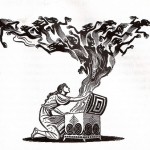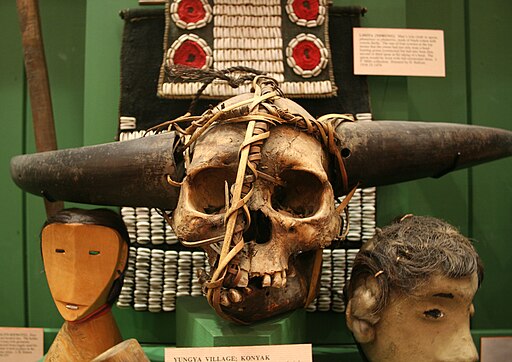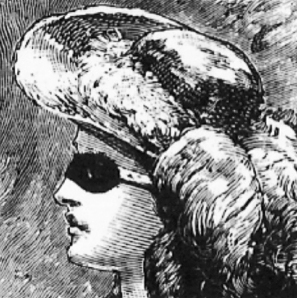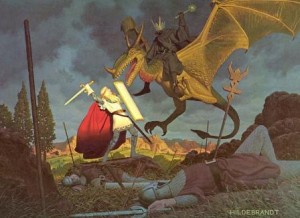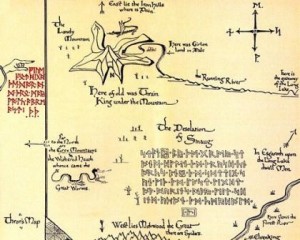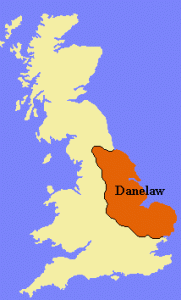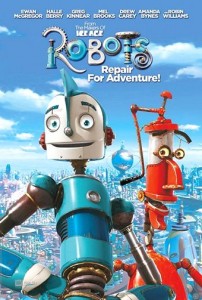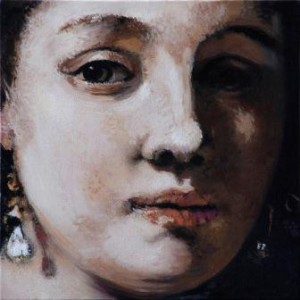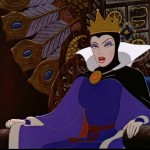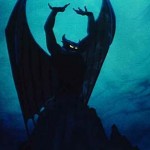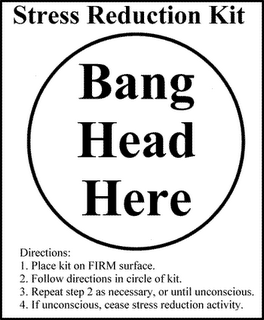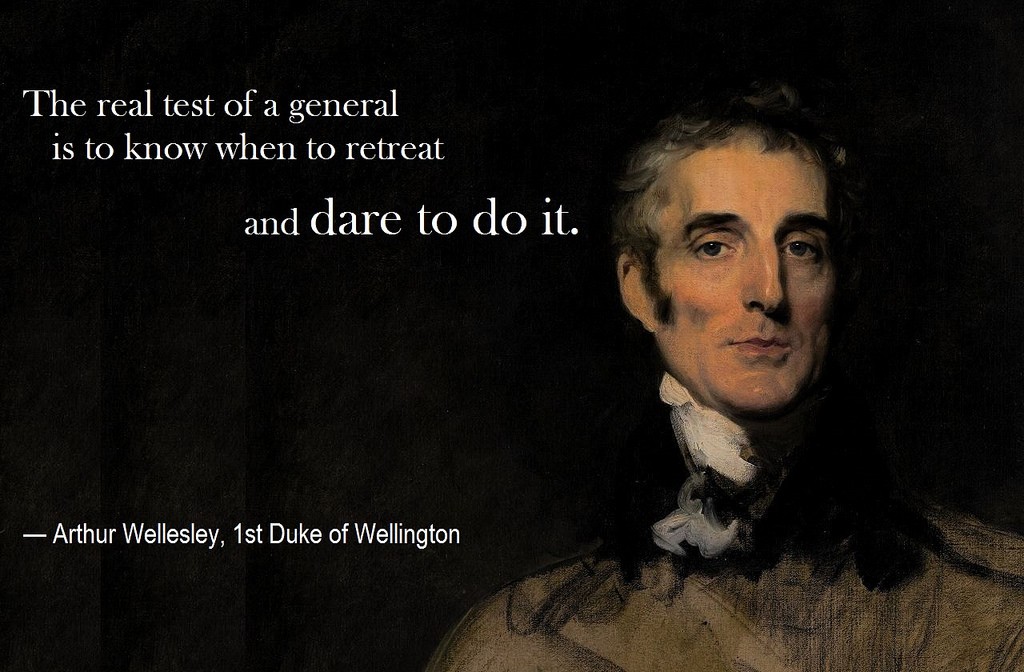 There’s a great deal of cruelty in the news right now. It’s one of the reasons behind my Lenten retreat from social media. Still I can’t escape it altogether. A dear friend has been deeply affected by a child murder close to where she lives. Reality insists on being seen – so why on earth do I chose to write fantasy, to make impossible things up? Continue reading
There’s a great deal of cruelty in the news right now. It’s one of the reasons behind my Lenten retreat from social media. Still I can’t escape it altogether. A dear friend has been deeply affected by a child murder close to where she lives. Reality insists on being seen – so why on earth do I chose to write fantasy, to make impossible things up? Continue reading
Tag Archives: JRR Tolkien
Riches beyond the dreams of Avarice
Wednesday 21st August 2013 found me in Oxford. I had come for an event at Oxford Playhouse – of which more later – and decided to make much more of a trip of it by adding in two museums.
My head and my heart are now stuffed with treasure.
First off, I went to the Magical Books exhibition at the Old Bodleian library. For me this was akin to the veneration of saints’ relics: I found it deeply emotional to be in the same space as work by writers and artists I love.
For example, there was Tolkien’s lovingly created Fragments from the Book of Mazarbul {That’s the burnt bits the Company find in the mines of Moria which tells them of Balin’s fate for those non-Tolkien geeks reading}. You could see the marks his pipe had made.
There were maps by C.S. Lewis and folio sheets of Alan Garner’s beautiful handwriting. I thrilled to see Pauline Baynes’ exquisite artwork, and manuscripts by Susan Cooper and Philip Pullman.
Perhaps I hoped some of their magic would rub off on me?

Whatever the truth of that emotion, it reconfirmed that fantasy and magical realms are my first love, Faerie is where my Muse comes from.
So I was more than happy to see some of the artefacts that had stimulated my literary heroes. Ancient magical texts and arcane objects imbued with mystical power starred in the glass cases. Objects associated with alchemists, witches and magicians always fascinate.
In the evening I had a glorious writerly overload: Neil Gaiman talking to Philip Pullman at Oxford Playhouse. Despite both of them avowing atheism, it was interesting to note a perhaps spiritual element in their discussions about the Narrator. Whether literal or figurative, there was a definite mystical aspect to their talk.
So to today.
The Pitt Rivers Museum.
Wow.
If you ever short of ideas, just go there. The juxtaposition of objects from cultures from all over the world makes a wealth of extraordinary starting points.
Try these:
- light-bulbs turned into oil lamps – in contemporary city slums
- the tip of a tongue preserved to make a charm– in the English countryside
- a light waterproof cape fashioned from seal innards by Arctic people
Imagine who made these astonishing things and what their life was like.
If nothing else, the Victorian displays create an inspiring ambiance. And there are display cards with information about rituals and practices. Mash-up one with another and you have instant context for a drama.
I managed to spend four hours in there and only touched on the downstairs. There are two more galleries to go at.
I had to stop. My imaginative well was brimming and plashing down its moss- covered sides. Now that’s truly magical, whatever your beliefs.
Where do you go for a top-up?
Principal Boys
Now I am something of a feminist in case you didn’t know, Dear Reader – but I do love a Principal Boy. I love a girl in britches. I always fancied the Prince in the Panto, and any story where the girl dresses up as a boy and gets away with it, gives me great pleasure.

What a pirate! ( Jacket from The Dark Angel)
There’s the irrepressible Linnet in The Children of Green Knowe playing at being a choirboy, Jo March acting in Little Women, Celia Rees’ Sovay – a highwaygirl and of course, most of the cast of Terry Pratchett’s Monstrous Regiment.
I never knew George out of The Famous Five books – but I would have loved her. Likewise Mulan and Tamora Pierce’s Alanna . I was a bit of a tomboy – having to be forcibly made to wear a frock, turfing my dolls out of their pram and using it to carry bricks, and jousting with the clothes pole.
I have to admit I was easily hoodwinked. I had no idea about the central character in The Turbulent Term of Tyke Tyler ( which I still love) and honestly, it came as a great and glorious surprise to me when Dernhelm took off ‘his’ helmet in The Lord of the Rings. It still moves me every time I read it.
I really don’t want contemporary girls to think they have to be boys in order to have autonomy.(See my previous post and this splendid one by Katherine Langrish). But in historical fiction and fantasy, it’s a way for our heroines to get out of the home – and it’s such great fun. There’s something about the sheer audaciousness of it.
And in my case, I identified more with Robin Hood or The Lone Ranger or Ivanhoe or my Dad than my stay-at-home Mum. That probably speaks volumes about me. I’ll end with Gandalf speaking about Eowyn to her brother Eomer:
but she, being born in the body of a maid, had a spirit and courage at least the match of yours.
I think that’s it – spirit. Girls in britches embody courage for me.
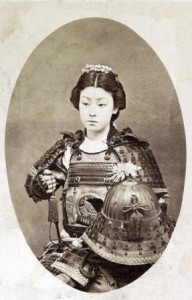
Female Samurai courtesy of Retronaut
The naming of places
Like Terry Pratchett, I was blown away on first reading Tolkien:
It’s got maps! And names!*
I am still in love with his entire lexicon and mythology of Middle Earth, and one of my favourite features was the names he gave places. Now it helps if you are an expert in Anglo-Saxon and all-round-brilliant, but still I aspire to have towns, harbours, moors and rivers that convince. The place is a central character for me.
As most of my readers will know, I was born and brought up in the West Riding of Yorkshire. Norse words are part of my cultural DNA. Give me tofts and thorpes , skels and scars, and I’m a happy woman. I suppose I could set all my work in the Danelaw – but I might like to branch out.
Now since I write stories with more than a touch of fantasy, I could just make it up. But that seems like selling the reader short. I have to confess a more-than-reasonable dislike for place names made up out of real words with different meanings ‘because they sound good’. Call me a nerd, but I like a bit of toponymic integrity. If it’s set in the Fenland, I want names like Penny Soakey, Toseland St. Agnes and Green Knowe (thank you, L. M. Boston).
One approach I use is to blend existing names: I took Sel (seal) from Selsey and –chester (southern variant for ‘Roman settlement’) from Chichester to create Selchester, my City-on-the-Sea. I still like to be careful about origins (no Pictish elements with those from the Jutes for example – like mixing Aberdeen with Canterbury) but it works.
Another way is to recycle the names of abandoned or lost settlements – those places deserted after the Black Death, or victim to coastal erosion. There are a great deal of powerful story backgrounds here too.
You can also look up old maps and use the alternative spellings or earlier forms of places. The Domesday Book is brilliant for that, and zoomable old OS cartography is a wonderful time sink, I have to admit. There are cracking books too: Caroline Taggart’s The Book of English Place Names and the splendidly browseable McKie’s Gazetteer ( which gives any number of odd stories).
And if nothing else, all this research will give you a smile when you come across delights such as Wetwang, Triangle, Great Fryup Dale, Booze (with no pub) and Blubberhouses Moor (all in Yorkshire).
* this may be apocryphal – but it’s too good not to use.
Reading material
This post owes its parentage to Vanessa Harbour on ‘The importance of reading as a writer’ and Maureen Lynas’s writing about an approach to structure. I thank them both for getting me thinking about what I read and how it affects my writing.
One notable feature of the MA at West Dean was the challenge of reading in new genres. Without that I would never have discovered the emotional intensity of ‘A Quiet Belief in Angels’ by R. J. Ellory or to be honest ,the complex and satisfying structures used by Agatha Christie & Ngaio Marsh. I didn’t ‘do’ crime fiction before. It’s taught me to be an even wider ranging reader.
Now I enjoy being sent books by Vivienne Da Costa for Serendipity Reviews. There are joys like the sheer delight of seeing a much-liked author Chris Priestley come into his own – really using his deep knowledge to create ‘Mister Creecher’. Or the pleasure of reviewing a colleague’s debut novel like ‘Slated’ by Teri Terry.
I am sent different age-ranges and genres – this helps me to see what I admire, and also what I don’t want to write.
Greg Mosse insists students understand that it’s not what we like in a Reading-Group-glass-of-wine-and-nibbles way that matters, but what works. To my family’s annoyance during the MA year I couldn’t watch anything without taking it apart to see the gears and cogs. I keep quiet now – but I’m still anatomising in my head.
And yet…
It’s not just that, however useful. It’s about inspiration. The things that make me want to write.
This will sound cringeworthy but it is true: I want to pay it forward.
I want to take readers to new worlds.
I loved Narnia and Earthsea and Pern and Middle Earth ( yes I know -it’s our world millenia ago). How wonderful to transport other people somewhere special.
I want to speak with my own voice.
I can hear writers like David Almond and Robert Westall, and Leon Garfield and Joan Aiken. They taught me I can be myself, Northern vowels and all. That you can use language to give flavour and identity. I want to share that.
I want to revel in reworked tradition.
I think of Alan Garner, George Mackay Brown Lloyd Alexander, Susan Cooper and nowadays Katherine Langrish, Jackie Morris and Pat Walsh. They develop shared folklore, myth and legend and keep it alive. It’s too good not to pass on.
I want to express my delight in transformation.
Books move me far more than cinema or TV, they always have done. I can never forget the change in Mary Lennox in ‘The Secret Garden’, or Eustace Clarence Scrubb in ‘The Voyage of the Dawn Treader’. And I’m still a soppy date about Scrooge & Silas Marner. Who wouldn’t want to show what people can become?
So, in short, I think you have to read and read and read to be even a halfway decent writer. Or at least I do.
How about you?
Worlds apart
 World-building is something most obviously associated with authors of science fiction and fantasy. However it is also clearly relevant to history writers – and I would argue almost any writer worth their salt. Even if you write contemporary social realism, you are still investigating a culture.Especially if that culture is located elsewhere to that of the intended reader, you have to indicate it. Google Earth doesn’t show attitudes.
World-building is something most obviously associated with authors of science fiction and fantasy. However it is also clearly relevant to history writers – and I would argue almost any writer worth their salt. Even if you write contemporary social realism, you are still investigating a culture.Especially if that culture is located elsewhere to that of the intended reader, you have to indicate it. Google Earth doesn’t show attitudes.
For example, we all know what an airport look like so you don’t need to describe it in great detail, but what aspects will be central to the people in your book? What will they pick up on? It’s the perspective that matters.
As part of the MA at West Dean, we looked at the opening sequence of ‘Robots’. Here an entire mechanical town is brought to life in seconds through minor characters before we get into the ‘real story’. A notable feature was that each little robot character had its own volition – they were all doing something for themselves ( not our benefit) that brought us into their world.
I’m reading Jackdaw Summer by David Almond at present. Here the introduction shows us the boys’ world very clearly through their eyes by the things that they do – again well before we encounter the ‘main ‘ story.
In each case the introduction is economical but effective. There is a profound sense of much more thought underpinning what we see. But the creation of culture, however intricate, isn’t enough. You don’t need to create languages and maps and dynasties of kings like Tolkien, wonderful though they are. His worlds work because they are illuminated by cracking good stories and characters we care about.
It’s similar to special effects in films – like fire, CGI is a good servant but a poor master. We all know films that look wonderful yet feel empty. The same can occur with books – full of style but forgettable.
We all know films that look wonderful yet feel empty. The same can occur with books – full of style but forgettable.
The point is that whatever we put in the book must move along the story or cast light upon the characters – otherwise it’s so much window-dressing. Brian Froud’s fabulous parallel cultures of the Mystics and the Skeksis in ‘Dark Crystal’ are there because they matter to both the plot and the beings in the film.
There are dangers in portraying another world too carefully, be it designer fashion or a space outpost. One one hand you can insult the reader’s intelligence, and on the other loose the things that matter in a welter of detail. This doesn’t mean you can neglect your homework, though. Aardman animations can get Gromit’s subtle expressions right because they put in the hard work in the first place.
So whatever your genre, take a leaf from the Old Masters. The second rate portrait artists were superb at showing lace and jewellery and sumptuous fabrics. The best left those aspects sketchy and put the most skill into the faces. You have to choose what really matters.
All that is gold does not glitter
 This week I thoroughly enjoyed this blog post by Meg Rossoff and the reply from Kathryn Evans here. Both wrote fascinating and well-constructed accounts of their intriguing lives. I feel honoured to have such brilliant people among my friends and acquaintances – and I know very many of you reading this could come up with equally extraordinary autobiographies.(Please do – I’d love to read them.)
This week I thoroughly enjoyed this blog post by Meg Rossoff and the reply from Kathryn Evans here. Both wrote fascinating and well-constructed accounts of their intriguing lives. I feel honoured to have such brilliant people among my friends and acquaintances – and I know very many of you reading this could come up with equally extraordinary autobiographies.(Please do – I’d love to read them.)
But I also felt very humble. I haven’t done anything half so interesting – I’ve had a rather dull little life. How can I possibly account myself a writer in amongst these wondrous folk?
Well, I do have that essential quality for a writer – imagination.
My CV may not include the distillation of noxious herbs and their application to vile old women ( you’ll be glad to read), I may not be qualified to mount the most spectacular fireworks display in a ruined priory – nor am I actually able to shape-shift and explore the depths of the North Sea – but I can dream these things up.
And I am something of a pirate – I raid books and magazines and TV programmes and films and other people’s conversations. I sneak off with the shiny bits and clothe myself in their finery. I can nab a bit of someone else’s life and try it on for size: the more magnificent, the better.
Sometimes I even dress that way.
So my friends, if you are like me, a bit commonplace, it’s fine. The source of your writing may not be obvious.
Even a little grey pigeon can be a peacock on the inside.
Keeping it real
 One of the better aspects of insomnia is the chance to listen to Radio 4 on the i-player. This week I have been particularly enjoying the Pilgrim series of radio dramas by Sebastian Baczkiewicz. He places English legends in the present day, where the Greyfolk intervene in our Hotblood world in unsettling ways.
One of the better aspects of insomnia is the chance to listen to Radio 4 on the i-player. This week I have been particularly enjoying the Pilgrim series of radio dramas by Sebastian Baczkiewicz. He places English legends in the present day, where the Greyfolk intervene in our Hotblood world in unsettling ways.
It is notable that the contemporary setting makes the eerieness of the traditional tales all the more believable – a kind of corroborative evidence. As a younger reader, I loved much of the work of Alan Garner and Susan Cooper for that sense of it could be happening right here, right now. I still delight in the Narnia Effect of slipping into other worlds, the intersection of the parallel such as Philip Pullman uses. I believe we all like to think we could be the one who notices such things.
What if all the myths and folktales of these islands were true? And what if they were not only true but present now in our world? All the spirits, existing, as they have always existed, in the gaps between tower blocks, in the shadows under bridges, in the corner of our vision…
(from the Pilgrim programme information)
Some writers take another approach: ‘it could have happened’. I think of Pat Walsh and Katherine Langrish with their beautifully depicted historical worlds which also have magic at their core. Some go for an alternative history: Joan Aiken springs to mind and for adults, Susanna Clarke’s ‘Jonathan Strange & Mr Norrell’. Here in particular, the sheer detail and interweaving of stories gives an internal validity which I find engaging.
But for sheer consistency of a created world, J. R. R. Tolkien takes every laurel wreath going.
I am almost certain that he once said he wanted to bring back fear into the leafy lanes of England at twilight, to create a truly English legendarium (1). He clearly didn’t intend something twee and Disneyfied: I think he would approve of Pilgim’s dark fantasy tone.
(In fairness to Disney, I have never forgotten Sleeping Beauty’s Evil Queen, or the demon in Fantasia -and I think this is due to the confidence with which they are portrayed – true to their legendary European roots.)
It is the conviction that matters. Read this:
Of all the tales told on these islands, few are as strange as that of William Palmer. Cursed, apparently, on the road to Canterbury in the spring of 1185 for denying the presence of the Other World by the King of the Greyfolk or Faerie himself, and compelled to walk from that day to this between the worlds of magic and man.
Which word sticks out like highlighter on an illuminated manuscript? ‘Apparently.’
For a split second, we step out of the writer’s world and look at it, not gaze round inside with wonder and terror.
Don’t do it.
I am not arguing for the po-faced rigidity of the worst of High Fantasy. A light touch such as in the ‘The Phantom Tollbooth’ or any of the Discworld novels does not distract from the internal consistency of their creations. You go there with the writer as your rather cheery guide.
Indeed, the best writers take the reader by the hand and go side-by-side with them into the terrors and delights of their own universe: think of David Almond. All writers can achieve this credibility – no matter which filter on the spectrum of realistic to speculative fiction they use. The ‘trick’ is to truly be there yourself.
(1) If you can locate the quotation, I would be inordinately grateful to know.
Mapping out the territory
A few years ago, we went on a giant pub crawl around the Yorkshire Dales. There was lot of laughing, rain , sheep, quaffing, rain, sheep, drystone walls, scenery and rain. My part in this adventure ( Four Go Mad in Swaledale sort of thing) was to mark out the route. Continue reading
Why bother?
You might well wonder. Why would any sane person face rejection after rejection, hours of work for an income of maybe £5k, and people asking ‘so what’s your proper job?’ or ‘are you the next JK Rowling?’ One answer, of course, is that children’s writers and illustrators are not sane!
A recent SCBWI group topic set by Candy Gourlay was “Authors and Illustrators in Waiting … How are you coping?” Paul Morton of Hot Frog Graphics came up with an excellent response:
‘ keep at it and keep believing’
I rather thought that could well be a SCBWI motto. It also set me to thinking about optimism in general.
It is hope that that inspires people to make New Year’s resolutions. Although we can be a little dismissive of such clichéd vows, we have to admire and learn from those who do make it through the grotty days of January and February sticking to their promises. The tough nuts who carry on cycling to the gym, the reformed smokers, the impressive slimmers – each deserves our admiration. Indeed, any sort of promise or vow is predicated on hope: I believe it is another reason why we love weddings, and why a baby brings joy.
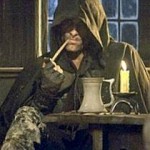 Sometimes the sheer difficulty of attaining your dream can make hope shrivel. It seems hidden, and keeping going seems more a case of dogged determination than optimism. Tolkien had Aragorn hidden and named Estel (Hope) as a child. He made the future king of Gondor wander the wilderness for the best part of sixty years. He suffers moments of terrible self -doubt: “An ill fate is on me this day, and all that I do goes amiss” – but his stubborn determination and belief in good over evil end in triumph.
Sometimes the sheer difficulty of attaining your dream can make hope shrivel. It seems hidden, and keeping going seems more a case of dogged determination than optimism. Tolkien had Aragorn hidden and named Estel (Hope) as a child. He made the future king of Gondor wander the wilderness for the best part of sixty years. He suffers moments of terrible self -doubt: “An ill fate is on me this day, and all that I do goes amiss” – but his stubborn determination and belief in good over evil end in triumph.
It is also hope that makes campaigners speak up for the things that matter to them: campaigner Steve Ross and children’s writer Michael Morpurgo bother to call on the government to “stand up” for libraries on Radio 4’s “You and Yours” as part of the show’s debate into library closures. Why Kate Mosse, Philip Pulman and Alan Gibbons keep banging on about this too – because they have hope. And it was why anti-slavery campaigner Olaudah Equiano wrote:
I hope to have the satisfaction of seeing the renovation of liberty and justice, resting on the British government, to vindicate the honour of our common nature.
Just as well something else other than the world’s ills came out of Pandora’s Box.